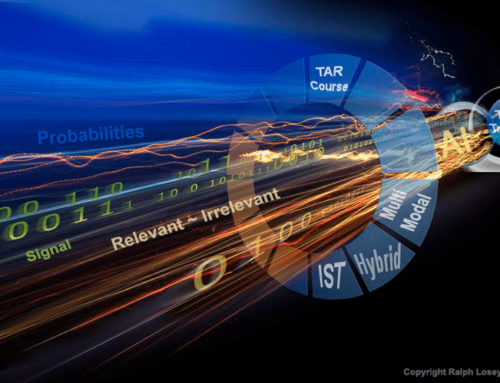Review Tools for Search:
eDiscovery review tools have many advantages over traditional discovery methods: document review is faster and less labor intensive, and with good planning and the right search parameters, relevant documents can be found that might otherwise be overlooked by human reviewers. And because most documentation is now electronically stored information (ESI), e-discovery is a natural choice for most litigation support needs. Here are some review tools for planning a solid search.
That “good planning and the right search parameters” bit is usually the hard part. The best search tools in the world are useless if you tell them to look for the wrong thing.
Types of Search Methods:
So how do you tell an e-discovery tool to search for the right thing? First, it helps to understand the types of search methods that e-discovery tools provide. These methods can be classified into two main categories: content search and metadata search.
Content search: These methods search through the actual words in the electronic documents. There are several kinds of content search methods. An exact-match search will return only items that contain an exact match of the keyword or phrase you specify, whereas a “fuzzy search” will also look for words that are spelled slightly differently. A phonic search returns items containing words that sound like your specified keywords (for example, “Cheryl” and “Sherrill”). Stemming searches are useful for finding different forms of the root word you specify; a stemming search on “swim” would return items containing “swim,” “swam,” “swum,” “swimming,” “swimmingly,” and so on.
More powerful content searches are also possible. A synonym search finds not only the keyword you specify but other words that mean the same thing. A concept search attempts to match ideas, such as “computer mouse” and “pointing device.” Technology-assisted review (TAR) and predictive coding attempt to judge the relevance of whole documents on the basis of sample documents that you provide.
Metadata search: Metadata refers to information about the documents, not the contents of the documents themselves. Metadata search enables you to locate documents that have certain characteristics, such as emails to or from a certain email address, or documents that were created on or before a certain date.
Finally, using Boolean operators such as AND, OR, and NOT, you can put together complex queries that combine different keywords and different search methods.
Search Strategies:
Crafting queries to find exactly what you’re looking for in ESI is not easy. A query that is too constrained might turn up nothing of value—or nothing at all. A query that is too loose will return too many documents, which isn’t helpful either. Not understanding how the tools work, or using them incorrectly, risks missing vital items or placing too much importance on documents that are less relevant. In short, using e-discovery tools takes some knowledge and experience to do properly. Here are some tips:
- Plan ahead: Understand your client’s argument and what types of artifacts will (and won’t) support it.
- Lather, rinse, repeat: This is an iterative process; you won’t find exactly what you need in one shot. Start with a broad search, and do some sampling from the results. You will probably find that a different search method is more appropriate, or you need to add Boolean operators to filter out irrelevant items.
- Get help: If it’s too overwhelming, you owe it to yourself (and your client) to bring in some expert help. Don’t undermine your client’s case with bad litigation support.
For more Tidbits & Thoughts, please click here.






